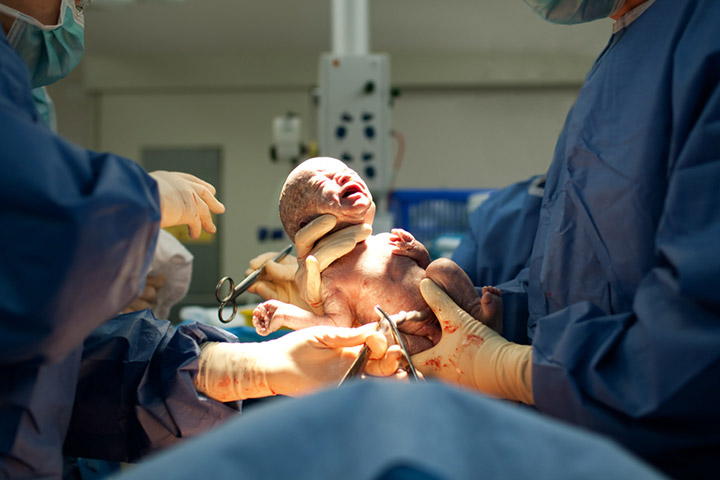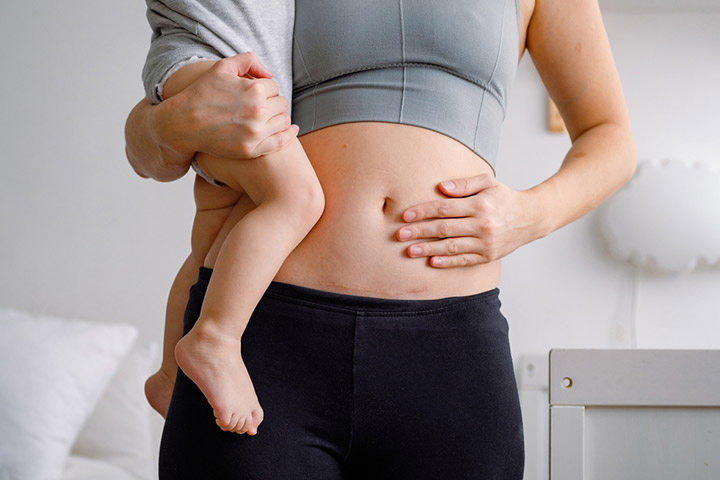
Image: Shutterstock
Pregnancy can be a beautiful journey with many challenges and learning experiences. But at the end of the road comes the delivery. Now, every mother-to-be spends months planning for the delivery of their baby. They take their vitamins, go to regular doctor’s appointments, discuss their birth plan and list out their preferences. In this day and age, where technology allows you to have so much control over your baby’s delivery, most women have already mapped out exactly how they expect the birth to go, especially if they’ve already delivered before.
But life is unexpected and sometimes emergencies can happen out of the blue. This is why no matter if you have a plan A, B or C, there may still be a chance of you having an emergency C section. A cesarean delivery is when a surgical incision is made in the abdomen and uterus of the mother in order to extract the baby from the womb. Now, this may seem scary, but it’s better to be prepared for the worst than come upon an unpleasant surprise during your critical delivery moment. So, here’s everything you need to know about an emergency C-section.
There Is A Difference Between Emergency C Sections And Unplanned C Sections
C sections aren’t for all moms but when they are recommended to a woman, it is always for the safety and wellbeing of both the mother and the child. However, there is one main difference between undergoing an emergency C section and an unplanned C section, and that is urgency. An unplanned C section is exactly what it sounds like. This is when the mother in labor intends to give birth vaginally but cannot do so, due to unforeseeable circumstances, like the baby changing positions in the womb. In cases that involve an unplanned pregnancy, the mother and baby are usually healthy which means that the risks are lower than that of an emergency C section.
A doctor might even determine that the mom should have a C-section during labor or even days or weeks before so that there is no confusion on the delivery day. But emergency C sections are far more risky and time conscious. They often happen minutes before the decision to deliver has been made. Emergency C sections happen under more drastic and sometimes frightening situations and circumstances. This is when the mother delivering may have already proceeded with her birth plan but needs a c-section midway due to complications and risk to her health as well as the safety of the baby.
Reasons For An Emergency C-section
1. The Umbilical Cord Presents First
Dealing with a prolapsed cord in the middle of the delivery can be a serious concern for both the mother and the baby. If the umbilical cord is damaged or wrapped around the baby’s neck or other vulnerable body parts, it can cut off the baby’s oxygen supply. And this can lead to brain damage or in the worst cases, death. The umbilical cord can also wrap itself around the baby multiple times and strangle or suffocate them to death.
2. There Is A Problem With The Placenta
The placenta is a vital body part that plays an important role in keeping the baby healthy and alive, in the mother’s womb. However, it poses a risk to the baby during delivery if it presents first. If the placenta presents first, it is called placenta previa and it can naturally block the baby’s passageway through the vaginal birth canal.
3. The Baby’s Heart Rate Drops
A glaring sign of fetal distress is when a baby’s heart rate drops all of a sudden. This is when the doctors know without a doubt that the baby is in trouble and needs to be extracted from the womb immediately. The mother does not have time on her side to opt for a vaginal delivery and therefore, must have an emergency C section.
An Emergency C-section Can Mean A Difficult Recovery
Keep in mind that a C-section is a major surgery and you must treat your recovery period seriously. Don’t overdo it and try to be too active after you and the baby are brought home. Try not to lift anything over 25 pounds in the first week and make sure you take some painkillers. There are many that don’t affect your breast milk so it’s completely fine.
Having an emergency C-section can be quite traumatic in certain situations. So, give your body the time it needs to rest, recuperate and heal. And remember, there’s nothing wrong with having a C-section to ensure the safety of you and your baby. So, keep an open mind on your delivery day!
Sources
- Placenta Previa, NCBI
- Prediction of emergency cesarean section by measurable maternal and fetal characteristics, NCBI
- Decision Delivery Interval in Emergency and Urgent Cesarean Sections: Need to Reconsider the Recommendations?, NCBI















